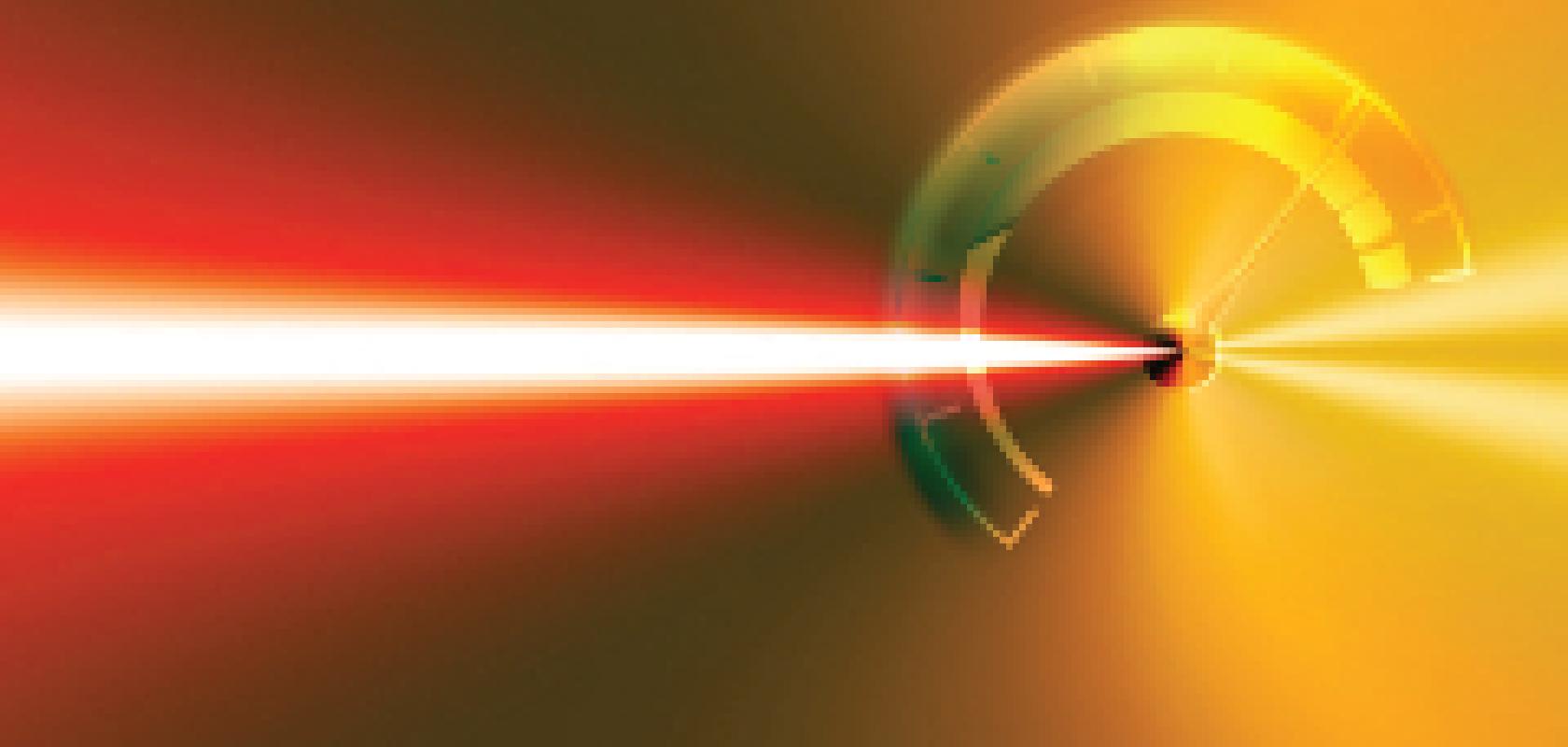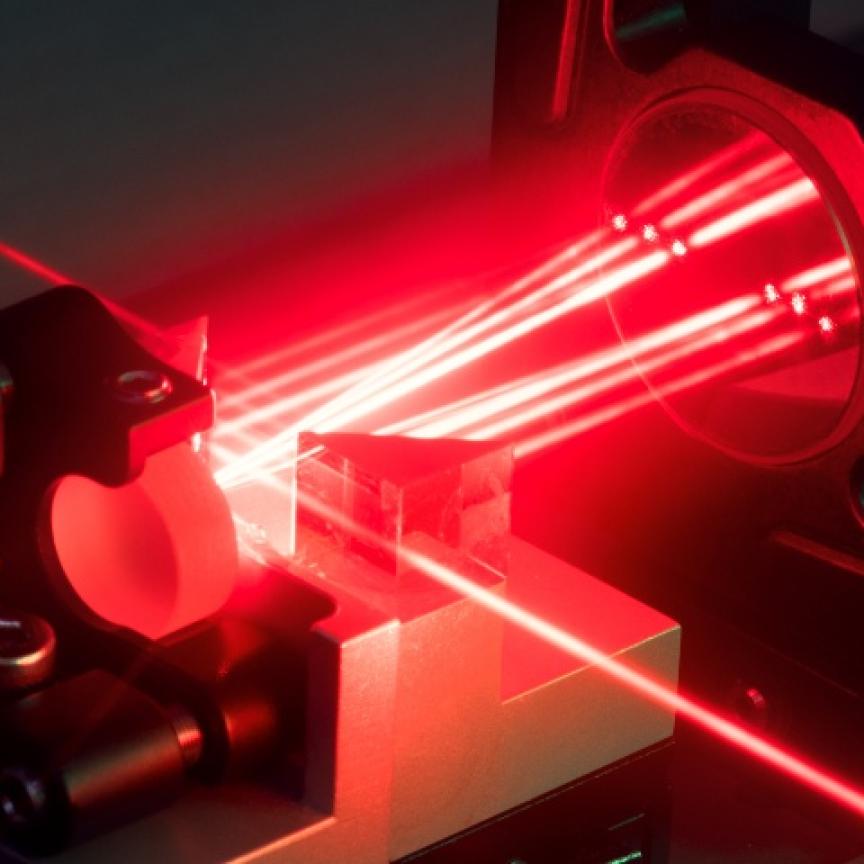Ultrafast lasers are gaining wider acceptance in a variety of applications and femtosecond systems are at the forefront. As higher average power increases, the cold ablation characteristics of the femtosecond range of lasers is making ultrafast systems much more attractive.
‘The ultrafast market is going to higher average power lasers, with some limitations. We can give either more energy per pulse or more repetition rate. Either parameter can increase average power,’ says Amplitude’s Vincent Rouffiange. Amplitude’s development of ultrafast lasers has been about answering the question, what direction is the ultrafast market taking? The company has been launching around one or two new lasers per year. To meet customers’ expectations, instead of providing a pulse of 10mJ, a laser could provide 100mJ. Instead of a repetition rate of 100kHz, a laser could have a rate of 1MHz.
Applications for either approach are very varied and include engraving for luxury watchmakers, writing data matrixes on syringes, and removing thin layers from solar cells or other types of thin film processing for electronics wafers and display screens. ‘When there is need for non-thermal processes on materials in the field of thin film processing, it can be on any material that has a thin layer that has to removed,’ says Rouffiange. Writing data matrixes on syringes means processing transparent materials. The laser is used to change the refractive index of the glass to create the appearance of printed symbols. The aim is not to create any cracks in the syringes or any dust during the marking process. Rouffiange describes it as ‘quasi-invisible marking’. Another application is drilling holes for fuel nozzles. Here the high energy lasers are used with the goal of drilling very small holes in the injectors to create as fine a mist as possible when gas and oil is injected. ‘We are working with the femtosecond range so the removal of material is perfect,’ says Rouffiange.
The challenge to meet the customer’s needs is as much about the total system and not just the laser. As Rouffiange explains: ‘The limitation is not the laser side but the machine manufacturer.’ The challenge is how to use the laser usefully. A laser will not be simply shone on one spot. From cutting to drilling, to treating a surface, the laser has to move. ‘We move the spot on the sample and there the limitation is from the machine manufacturer, the technology to move the spot very quickly,’ adds Rouffiange. ‘A beam in one spot is not interesting because the energy you are putting into your material is too important and you are creating heating effects. The goal is to move the beam very quickly. There are lots of new technologies, for example, rotary scan heads.’
Another option is to split the beam, a technology avenue that Amplitude has investigated. ‘We looked at whether we should provide a 100mJ beam and the machine manufacturers split this beam into ten beams for parallel processing. We have worked on this and it is interesting,’ explains Rouffiange. ‘We are using fibre lasers and solid state lasers; both technologies have some interest.’
With this technology users can improve the throughput of their production with 10 beams working at the same time using 100mJ instead of a single 10mJ beam that has to be moved. While the goal of adding more energy and splitting the beams into more machines is one direction of the market, the other is a higher repetition rate.
In Rouffiange’s view: ‘Instead of 10kHz 10 years ago, or 500kHz now, we can think about using megahertz in future. It is quite easy with fibre to increase the average power with an increased repetition rate.’
At Photonics West 2013, Amplitude is planning to launch a fibre laser with 20W power with a maximum pulse energy of 40mJ at a repetition rate of 500kHz that can go up to 2MHz. ‘We are answering the requirement of high speed and high repetition rate,’ says Rouffiange. Another new disk laser from Amplitude to be launched at Photonics West is going to have pulse energies up to 300mJ with an average power of 30W with a repetition rate of 100kHz.
For Coherent’s Marco Arrigoni, femtosecond lasers based on titanium sapphire technology are a significant development for the market – in particular, their application to multiphoton microscopy. ‘Multiphoton spectroscopy has been driven by developments of titanium sapphire lasers exploiting the full tuning range of these lasers, which is in the range of 680 to 1080nm, and the new development is to push towards longer wavelengths of 1100 to 1300nm,’ says Arrigoni. Those longer wavelengths are achieved with titanium sapphire lasers pumping optical parametric oscillators (OPO). One trend that Arrigoni is seeing in the market is researchers using multiphoton microscope wanting to use several nonlinear techniques in parallel. This is so they can hit the same spot with two different wavelengths at same time. This will not only excite the target area for fluorescence but also harmonic generation and other processes.
‘Our tool of choice is an ultrafast laser, the Chameleon. This is a fully automated computer controlled and fully tunable laser over 400nm wavelengths. This laser can excite samples and can pump an OPO,’ says Arrigoni. ‘You have coverage between 680nm and 1080nm from the Chameleon and 1000nm and 1400nm from the OPO. The two devices, Chameleon and OPO, are tunable independently. The user can select the wavelength that he likes and have them both at the same time.’
According to Arrigoni, this enables multimodal imaging. The combination of two nonlinear techniques, multiphoton and second harmonic generation, can deliver an image that gives greater information on the sample. The users are mostly biologists or scientists. ‘Narrow science and in-vivo study of the brain drove these developments, usually mice brains. They will open the brain of a mouse and, in place of a skull section, 4mm by 4mm large, they can put in a glass window,’ says Arrigoni. ‘This is so they have part of the brain exposed without drying it. You need to protect the brain. They can then put the mouse under a microscope and follow its neural activity and the most amazing thing is they can monitor electrical brain signals related to the mouse’s response to visual or olfactory stimuli.’
The scientists put the mouse on a Styrofoam ball. This is a ball with a virtual reality screen. The Seattle, Washington state-based Allan Institute for Brain Science carries out such research. The mouse has the option of deciding whether to go left or right. The scientists can track mouse brain activity at the neuronal level, the very electrical signals of the decision-making process.
‘You can probe 1mm deep into the brain tissue and they do not damage the mice,’ explains Arrigoni. ‘The mice live six months after they have the window implanted. The limitation is that, after a while, the tissue heals by itself – so, under the windows, the tissue creates an opaque layer they can’t see through.’
While femtosecond lasers are adequate for examining neural processes, the frontier for ultrafast is attosecond.
Fast enough to watch electrons move, what they do have in common with Arrigoni’s femtosecond lasers is the use of titanium sapphire lasers and optical parametric pulse amplification. Dr Thomas Hellerer is Toptica’s marketing director for ultrafast lasers. His company has the attosecond market in its sights. ‘We have attosecond science, this is very new. They need powerful strong lasers; they start with a small seed laser and amplify it and amplify it.’
According to Hellerer, the new trend for attosecond laser is titanium sapphire lasers using optical parametric pulse amplification. These need a strong laser which can be narrow band. The signal needs to be amplified with a pump laser that is broadband, but in itself does not need to be strong.
While amplifiers have many stages and this, Hellerer admits, has advantages over titanium sapphire lasers, users also need two ‘colours’ that are synchronised. These two ‘colours’ could be two outputs; one at 1μm and another at 1.5μm. The 1μm laser seeds the amplifiers and the other, the 1.5μm, is used as the signal – very broadband and short-pulse. ‘They are synchronised as they come from the same oscillator,’ explains Hellerer.
All of Toptica’s ultrafast lasers are fibre lasers. They are sold into markets that need turnkey systems such as users that operate photon polymerisation. Toptica provides its lasers to the likes of Nanoscribe, a system integrator for its 3D laser writing product. Another ultrafast laser area for Toptica is pulse terahertz, which Hellerer says ‘more and more people’ want. Another is portable systems, and there Toptica’s latest product is Teraflash. Teraflash is a spectrometer kit with a nine-inch rack that includes the laser and flexible antennae. This is used for non-invasive inspection and other types of material inspection, according to Hellerer.
Mouse brains, cold ablation, spectrometry-ultrafast lasers, whether they are femtosecond or attosecond, are attractive for a range of applications, scientific and commercial.
While billionths of a second pulse durations will never be needed by all laser processes, the growth of applications and the realisation of their use in a wide variety of sectors can only mean ultrafast is here for a long time to come.


